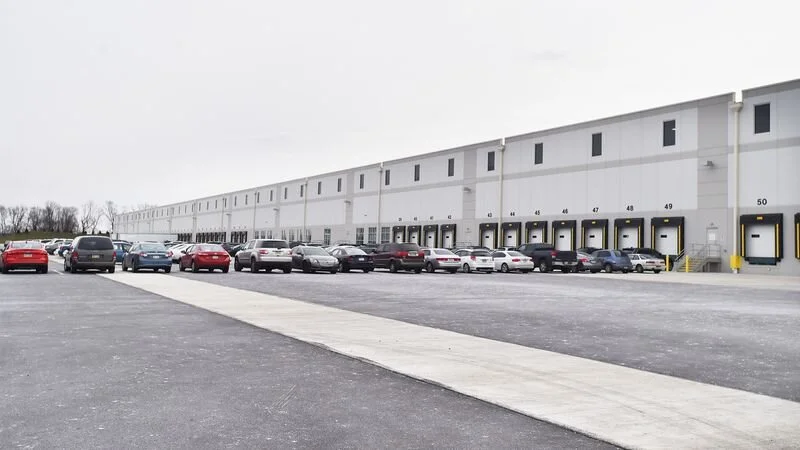Your View: Becoming ‘Warehouse Valley’ not area’s only economic option
But the story I’m referring to is “A New Crop in Pennsylvania: Warehouses.” It detailed the proliferation of large warehouses sprouting up in the Lehigh Valley and put a specific focus on laying out the pros and cons of the more than 30,000 warehouse-related jobs that can start at $16 an hour for workers with no more than a high school diploma. These warehouses and these jobs have a place in our economy.
THE MORNING CALL | JUN 08, 2021
The Lehigh Valley made the New York Times again last week, and why shouldn’t we be part of “All the News That’s Fit to Print” in one of the world’s most trusted daily publications? Thousands of people who work in New York and New Jersey choose to live here in the Lehigh Valley — in some cases enduring a daily 90-minute, mind-numbing commute along Interstate 78 — just to take advantage of this region’s unique character and high quality of life. It should surprise no one that our successful and growing region seems to be getting publicity with greater frequency in recent years.
But the story I’m referring to is “A New Crop in Pennsylvania: Warehouses.” It detailed the proliferation of large warehouses sprouting up in the Lehigh Valley and put a specific focus on laying out the pros and cons of the more than 30,000 warehouse-related jobs that can start at $16 an hour for workers with no more than a high school diploma. These warehouses and these jobs have a place in our economy.
I don’t so much take issue with what the article said, but more so with what it didn’t say. While it was noting how warehouses have made the Lehigh Valley a depot on the global supply chain — true — it didn’t say that our future is not even remotely dependent on these buildings or these jobs. It didn’t say that we have some of the world’s largest and most dynamic companies innovating and creating the jobs of the future. While natural pet food pioneer Freshpet spends $100 million to grow in the Hanover Township, Northampton County, Orasure Technologies is at the cutting edge of COVID-19 rapid testing innovation in Bethlehem, even as Mack Truck produces the kind of zero emission electric trucks that will be picking up trash from New York City streets as part of the city’s ambitious goal to cut greenhouse gas emissions 80% by 2035.
The Stitch Fix Warehouse in Lower Nazareth Township is just one of many such facilities to have sprung up in the Lehigh Valley in the last 10 years. Companies such as Amazon and FedEx tout their facilities has paying relatively high wages for people with few advanced skills or education. Detractors call the massive buildings environmentally destructive and accuse some of the companies that run them of practices that leave employees with little or no protection from potentially hazardous conditions, require long hours and give very few benefits. (APRIL BARTHOLOMEW / THE MORNING CALL)
We need a diverse economy with family-supporting jobs and the kind of sustainable development that is detailed in the Lehigh Valley Planning Commission’s “FutureLV: The Regional Plan,” which in April won the Governor’s Award for Local Government Excellence. Goal Four of the plan calls for a competitive, creative and sustainable region, in part by linking innovative companies to educations, and our community leaders are delivering.
There are many working on this issue, including our partners at the Workforce Board, Northampton County Community College, Lehigh-Carbon Community College and other higher education institutions and technical schools in the area. Many of the region’s employers are preparing their workforce to transition, by offering tuition, training and mentorship programs that support our next-generation economy. We must not aim for the lowest common denominator as we prepare for our long-term future and we must prepare in the short run in order for the Lehigh Valley to remain successful.
Our future is tied to education, job training and innovative public and private initiatives that create jobs and help protect our environment. We need more efforts like the MCS Industries solar project in Palmer Township, PPL’s five-year commitment to reduce greenhouse gases and Air Products’ hydrogen fuel cell innovation. These are examples in keeping with the LVPC’s 60-year mission to promote clean air, water and a sustainable future for our children and grandchildren.
Much the way those New York officials hope to use electric trucks for climate resiliency, these companies and educators here in the Lehigh Valley are also building workforce resiliency.
That doesn’t mean these multiplying warehouses — municipalities have approved nearly 30 million square feet since 2015 — can’t be part of that future. We’re very much thinking of the future each time one of these massive structures comes before our board. It’s why FutureLV is very clear about where these warehouses should not be built and why our planners often suggest developers go back to the drawing board to add green infrastructure, pedestrian accessibility, traffic-reducing road work and additional study to determine the impact of trucks on the surrounding community.
The point of those recommendations is to get our municipal partners to value the land these warehouse builders are developing. If they’re going to locate here, then let’s make sure they’re building in the right places, and don’t ruin the character all those New York workers come here to experience. Let’s make sure they respect our community and future. It’s quality, not quantity, that brings and keeps people and businesses here. Let’s continue to value what makes this region great and not trade it away in a race to the bottom.
Greg Zebrowski is chairman of the Lehigh Valley Planning Commission

